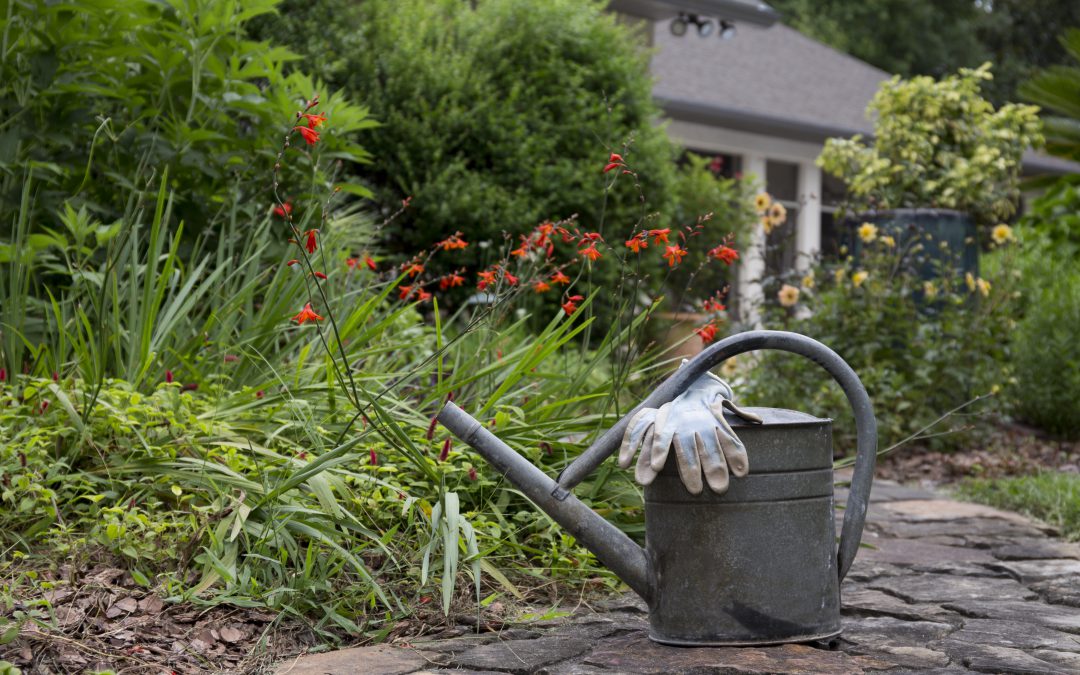
by Ray Bodrey | Jun 29, 2022
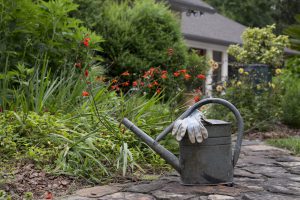
A watering tin and gardening gloves at a home garden.
Spending time gardening in the summer months can be difficult, especially in the Florida Panhandle. The brutally high temperatures and sometimes intensive humidity can make gardening seem unbearable. However, for those brave outdoor enthusiasts, there are always things to do around the homestead when it comes to vegetable gardening, landscape shrubs and lawn care.
Warm season vegetable gardening at this point becomes an uphill battle for some crops, with this being peak time for both insect and disease problems to occur. However, if you planted early enough, much of your harvest is probably in the safe zone. Scouting is key to prevent any major pest damage. Be sure to scout several times a week during these hot, summer days.
Shifting gears, the warm season is a good time to take extra special care of plants such as, azaleas and camellias, while they are establishing flower buds for the next bloom. A lack of water, fertilizer and pest detection and prevention can all certainly play a role in the following season’s flower production. Summer annuals always provide quick and easy color. Remember to feed established annuals with a complete fertilizer and remove faded blooms along the way. Water annuals well during hot, dry periods and control major annual pests to insure good production.
Finally, lawn maintenance is a need for many homeowners during this time of year. Almost all highly successful herbicides are no longer recommended at this point, as many will burn the turfgrass at temperatures above 80 degrees Fahrenheit. Depending on the weed pest and type of turfgrass, most likely the best way to control weeds in your lawn is to wait until cooler fall temperature to treat. Keeping good cultural practices this time of year will help in maintaining a healthy lawn and reduce pest pressure. Be sure to water lawns thoroughly when needed by applying one to three quarters of an inch of water weekly, depending on rainfall. Be sure to keep in mind mower height/frequency, as this is critical in keeping your lawn healthy. As stated in the “Mowing Your Florida Lawn” UF/IFAS EDIS publication, mow often enough so that no more than 1/3 of the blade height is removed per mowing. For example, if your St. Augustinegrass lawn is mowed at a height of 4 inches, it should be mowed before it grows to a height above 6 inches. It is important to always leave as much leaf surface as possible so that photosynthesis can occur, particularly in a grass that is subject to environmental or site stresses.
Unfortunately, it is chinch bug time again. Chinch bugs are prone to feed on St. Augustine lawns during hot, dry weather and may cause serious damage if not controlled. Damage usually occurs as a patch with a brown, dead center and yellowish margin. It seems chinch bugs get the blame, and often unjustly, for everything. Consult with your local county extension office to be sure the damage is not due to other reasons.
For more information, please contact your local county extension office.
Supporting information for this article can be found in the UF/IFAS EDIS publications/websites below:
Florida Vegetable Gardening Guide: https://edis.ifas.ufl.edu/publication/VH021
North Florida Gardening Calendar: https://edis.ifas.ufl.edu/publication/ep451#SECTION_7
Lawn Maintenance: https://edis.ifas.ufl.edu/entity/topic/lawn_care
Mowing Your Florida Lawn: https://edis.ifas.ufl.edu/publication/LH028
UF/IFAS Extension is an Equal Opportunity Institution.
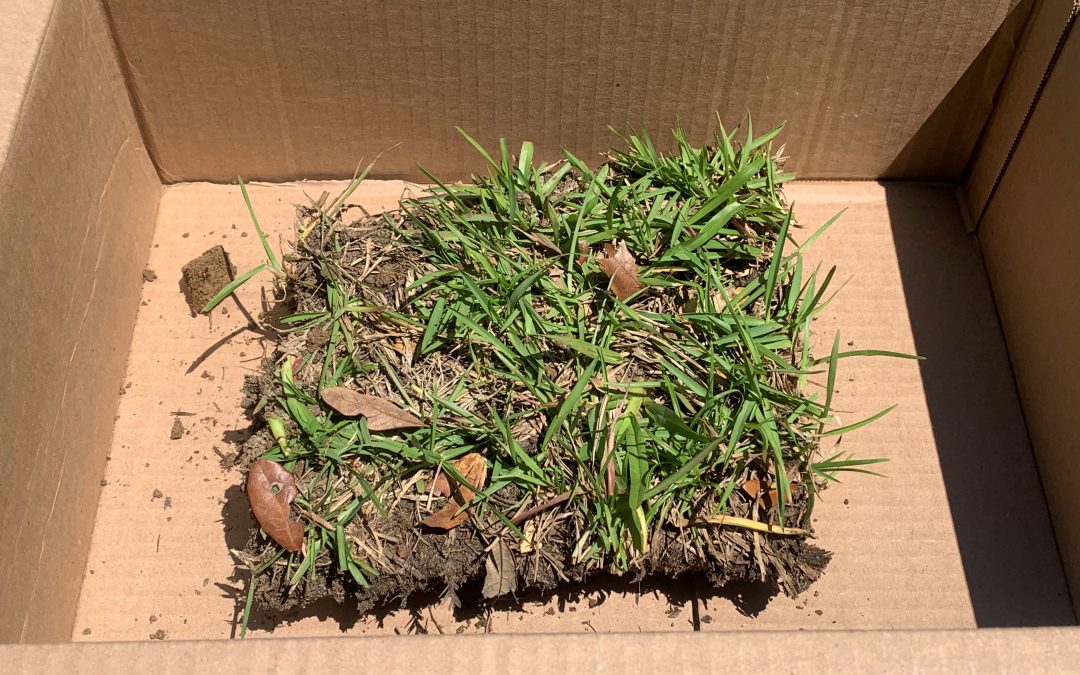
by Beth Bolles | May 5, 2022
Having a quality turf or plant sample is important to help us at UF IFAS Extension diagnosis a problem or identify a plant. Learn how to collect a sample of both turf and plant material if you will be bringing a sample to your local UF IFAS Extension County office.
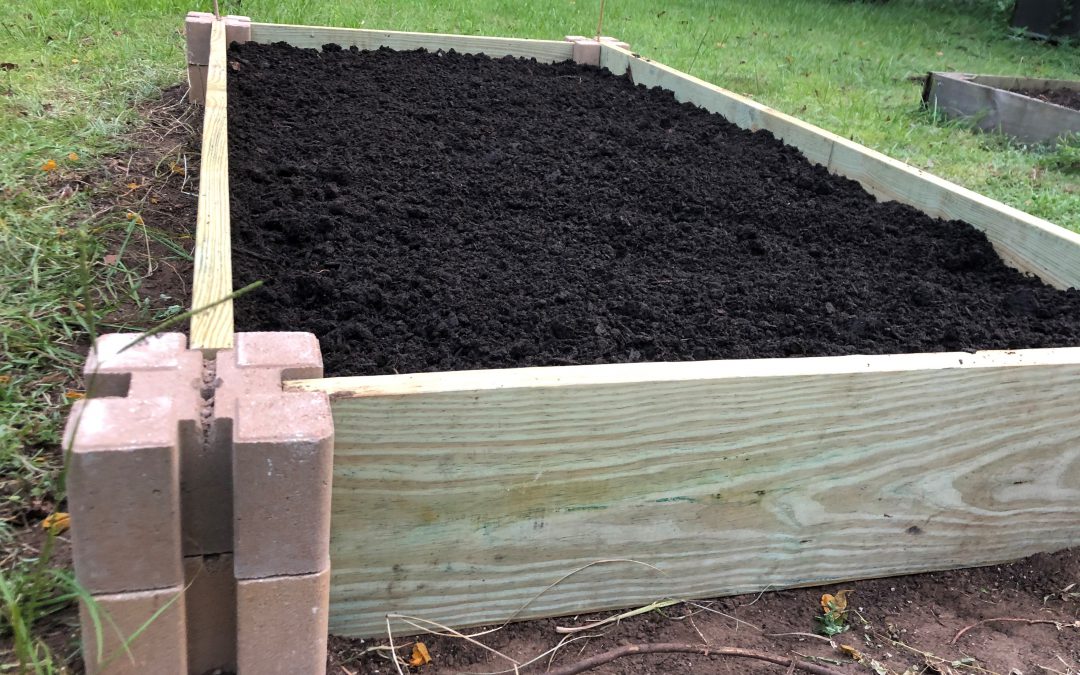
by Mark Tancig | Apr 7, 2022
Despite a sharp increase in costs recently, wood products remain a common landscape and garden material. They can be used for building structures, such as arbors and sheds, or for hardscapes and garden accessories, like raised vegetable garden beds or landscape timbers used for edging. Many homeowners may be confused on the safety of using certain wood products, especially around plants grown for consumption. This article hopes to explain the various options and the known safety concerns.
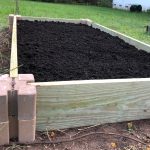
Raised beds are a common use of treated lumber in the garden. Credit: Molly Jameson/UF IFAS
Gardeners seem to be mostly concerned with the safety of using preserved wood products around food plants. Pressure-treated lumber is usually suggested whenever the material will be exposed to the elements and especially when in contact with the soil. Non-treated lumber, while free of any preservatives, will simply not last as long in the landscape, especially in Florida where we have a long growing season, are wet, and have lots of organisms – termites, fungus, etc. – that love to break down wood. If the wood is in direct contact with the soil, such as in a raised bed garden, you can expect non-treated lumber to last a year, maybe two, compared to three to five years with pressure-treated lumber. Wood products used for structures not in contact with soil can last significantly longer but, even then, non-treated products will need to be protected with sealers or paints to extend their longevity.
To address the safety of pressure-treated wood products, the wood products industry, and the federal government, in 2004, phased out the use of potentially hazardous chemicals used in the process – namely arsenic and chromium. Wood products preserved with these compounds were either chromated copper arsenate (CCA), ammoniacal copper arsenate (ACA), or acid copper chromate (ACC). Since 2004, much of the lumber available at hardware stores is micronized copper azole (CA) or alkaline copper quaternary ammonium (ACQ). The abbreviations for each are usually found on the little label stapled on to the lumber. So, while copper used to prevent fungal damage is still a component of pressure-treated lumber, the arsenic and chromium used to protect the wood from insect damage has been removed. Railroad ties, sometimes still in use and for sale, are much more toxic than even the older pressure-treated products because of the use of creosote and other oil-based compounds to preserve the wood.

Preserved wood products contain the preservation method on the tag stapled to the product. Credit: USDA Forest Products Lab
By removing these potentially hazardous compounds from pressure-treated wood products, gardeners should expect no adverse effects from it’s use. A Human and Ecological Risk Assessment of ACQ treated wood that was done in 2007 found exposure levels well below health benchmarks when directly contacting the wood and even with some ingestion of the material, such as contacting the wood and putting hands directly in mouth.
Even though these hazardous materials have been removed, there are still some precautions you should take when using pressure-treated lumber. These precautions include wearing a mask when cutting the lumber and not burning the lumber. This is to prevent inhalation of the chemically treated sawdust or smoke. It’s also not recommended to compost pressure-treated lumber since the chemicals can affect the microbes in your compost pile.
For those still concerned with the use of pressure-treated wood products around food crops, there are other options. In addition to using non-treated wood products or a plastic liner to separate the pressure-treated lumber from your edible garden plants. There are many other materials that can be used instead. Concrete blocks or other stone materials can be a good option. Logs from cut trees, although will rot like non-treated lumbers, can add a natural type of look to the garden.

Stone, metal, and concrete blocks are good alternatives to lumber. Credit: Mark Tancig/UF IFAS.
For additional information on pressure-treated lumber, visit this Clemson University website – https://hgic.clemson.edu/factsheet/treated-wood-in-the-landscape/. If you have any questions about the use of wood products in the garden or on how to build a raised bed garden, contact your local UF/IFAS Extension office.

by Beth Bolles | Mar 31, 2022
The February Q&A on Growing Tomatoes offered valuable tips for the home gardener to be successful with tomatoes in 2022. Below are the reference materials related to specific questions that were asked.
Let’s start out with the panels favorite tomatoes including hybrids and heirlooms.
Evan: Supersweet 100, Sungold
Larry: Amelia, Brandywine, Cherokee Purple
Sam: Better Boy, Tasti Lee, Sweethearts
Matt: Mountain Magic, Mountain Rouge, Bella Rosa
Daniel: Black cherry and Big Beef
Why are tomatoes red?
Can we grow tomatoes year around?
I have very sandy/loamy soil. Do I have a chance at successfully growing tomatoes?
What is the best time to start tomatoes in North Florida?
If one grows in raised beds, should one rotate where in the bed tomatoes are planted?
If you plant tomatoes in mid-March, how long will they continue to produce fruit?
I’m thinking of trying hydroponic gardening on a few tomato plants this year. Do you think a 50/50 mix of perlite and vermiculite would be a good approach for a soil medium? I’d like to use 5-gallon buckets and keep maintenance to a minimum.
What tomatoes grow best in inland Bay County? Coastal vs inland considerations.
Best type for all day sun (speak to tomatoes light requirements)
What is the best tomato variety for Northwest Florida? I need one go-to variety for both regular tomatoes and cherry type.
How to get more tomatoes, less vine?
My tomatoes get black on the bottom and rot. What causes this and how do I prevent it?
Do tomatoes need a lot of water?
Why do my tomatoes split/burst/crack while on the vine?
Any suggestions for how to handle especially wet years like last summer? My tomatoes really suffered.
How do I keep the leaves from getting dark spots that spread and kills foliage?
How do you string tomatoes vine to a stake?
What causes catfacing?
Every year I’m having trouble with an amazing amount of insect infestations on my tomatoes & peppers I grow in containers. What can I do to help?
How do marigolds (which variety) or basil aid tomatoes?
Please talk about save tomato seeds to grow. Some can’t afford to buy potted tomato plants.
Can you add nutrients into the soil from last year’s tomatoes to reuse again this year?

by Beth Bolles | Mar 10, 2022
Several years ago the Escambia County Master Gardener Volunteers added a Leopard plant, Farfugium japonicum to the office demonstration gardens. This was a new plant for me and I was immediately impressed with look and performance of this plant in a filtered shade garden.

Leopard plant’s attractive leaves and flowers make it an accent in the shade garden. Photo by Beth Bolles, UF IFAS Extension Escambia County.
Although not native to the United States, Leopard plant make an interesting addition to the Florida garden. The large green leaves can provide a tropical look throughout the entire year since it is hardy in growing zones 7-10. An added bonus of the Leopard plant are spikes of bright yellow flowers in the fall and winter months. When you use Leopard plant as a mass planting, it certainly becomes the focus in our cooler months.

Leopard plant on display in Downtown Pensacola. Photo by Beth Bolles, UF IFAS Extension Escambia County.
There are many cultivars of Leopard plant and the selections with white (‘Argenteum’) or yellow (‘Aureomaculatum’) patterns on the leaves give the plant it’s common name. There are also cultivars with curled or crinkled leaves. All plants will thrive in partial shade with some additional water when rainfall is lacking. The clumps will continue to enlarge so you can often share a piece with a friend after a few years.

by Molly Jameson | Feb 10, 2022

Join us via Zoom on Saturday, February 12, for our Leon County Seed Library Virtual Workshop. Graphic by Molly Jameson.
Believe it or not, spring is right around the corner! For gardeners, this is the time to start thinking about our spring season garden plan and starting seeds. Many spring vegetables, such as tomatoes, benefit from an early start indoors or in a greenhouse, planted in containers. This gives them a greater chance to avoid the intense heat of summer and beat many insect and disease life cycles.
Need seeds to start your garden? Well, if you live in Leon County, you are in luck. Starting Saturday, February 12, 2022, residents of Leon County can “check out” up to three sample seed packets per month with their library card as part of Leon County’s Seed Library Program. The vegetable seeds can be checked out from any of the seven library branch locations. Leon County residents can apply for a library card online at the LeRoy Collins Leon County Public Library online card application page (https://lcpl.ent.sirsi.net/custom/web/registration/).
Here are the vegetable seed varieties that will be available starting February 12:
- Mammolo Basil. Mammolo basil has an Italian aroma and a bushy, compact growth habit that is great for containers.
- Maxibel Haricot Vert Beans. Maxibel Haricot Vert produces prolific beans with long, slender pods and tender texture.
- Natsu Fushinari Cucumbers. Natsu Fushinari is a deep green Japanese-type of cucumber with eight-inch fruit and glossy skin. It has resistance to diseases in high heat.
- Little Fingers Eggplant. Little Fingers eggplant produces clusters of tender, long, deep purple fruit that can be harvested small or large.
- Pinkeye Purple Hull Southern Peas. Pinkeye Purple Hull Southern is a semi-bushy, early-season pea that produces prolific dark purple pods. It has resistance to many diseases.
- Bull Nose Peppers. Bull Nose is an old pepper variety, dating back to the mid-to-late 1800s, and has medium to large, sweet fruit that is great for cooking or salads.
- New Zealand Spinach-like Greens. New Zealand spinach is not a true spinach, but it loves the heat and produces succulent leaves that are excellent cooked or fresh in sandwiches.
- White Scallop Squash. White Scallop is a high-yielding Native American heirloom that produces scallop-shaped fruit great for frying or baking.
- Homestead 24 Tomatoes. Homestead 24 is a semi-determinate tomato that has medium to large red fruit developed for hot, humid climates, making it great for Florida gardens.
- Amy’s Sugar Gem Tomatoes. Amy’s Sugar Gem grows tall, vigorous vines and produces sweet, large red cherry tomatoes.
- Moon and Stars Watermelon. Resembling the night’s sky, Moon and Stars watermelon has a dark green rind with bright yellow spots. It has speckled yellow leaves and seedy, but very sweet, bright red flesh.
Whether you are located in Leon County or not, everyone is welcome to join us Saturday, February 12, from 10:00 a.m. to 12:00 p.m., for our Leon County Seed Library Virtual Workshop. Via Zoom, agents with UF/IFAS Extension Leon County will discuss spring vegetable gardening techniques and healthy eating. There will also be a live cooking demonstration showing how to prepare healthy meals and snacks at home, featuring vegetables available in the Spring 2022 Seed Library Program.
For more information about the Leon County Seed Library Virtual Workshop, please visit our Eventbrite page: https://seedlibraryworkshop2022.eventbrite.com. There is no cost to attend the workshop, but registration is required.
Happy spring gardening!













